Mitsubishi
-
New Mitsubishi Outlander PHEV introduced
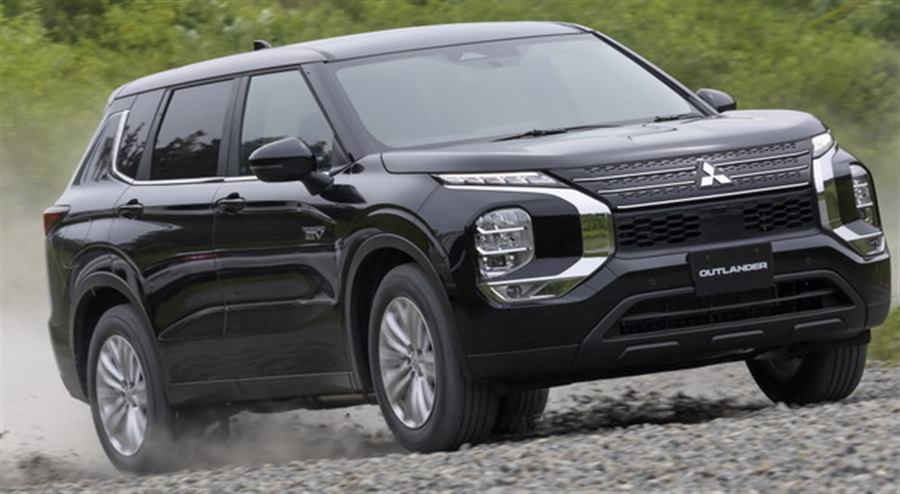
In February this year, Mitsubishi Motors introduced a new generation of Outlander, first with only a 2.5-liter gasoline engine with 184HP and 245 Nm of torque (with automatic transmission and Mitsubishi's "Super All-Wheel Control" all-wheel drive system) .
In the past period, a new Outlander Plug-in Hybrid was announced, which is now officially presented in Japan.
The Japanese, however, have not yet announced all the details, but it is known that the car received a new generation PHEV system with two electric motors (whose power has been increased by about 40 percent) and a 20 kWh battery. Autonomy in electric mode is up to 87 km, and there is also Super-All Wheel Control all-wheel drive. Also, the gas tank has been increased.
Mitsubishi did not release data on the internal combustion engine, so it is assumed that it is a 2.4-liter four-cylinder, as with its predecessor.
It should be reminded that the new Outlander is based on the platform of the new Nissan Rogue, while the look is inspired by the Engelberg Tourer concept that the Japanese factory presented at the Geneva Motor Show in 2019. In any case, the new interpretation of the "Dynamic Front Shield" of the front part stands out.
In terms of dimensions, the new Outlander is 5.1 cm wider than its predecessor and has a wheelbase increased from 267 cm to 271 cm, so it also offers 2.8 cm more legroom for passengers in the second row. The vehicle is 468 cm long, 186 cm wide and 175 cm high.
Also, the new Outlander has three rows of seats as standard, with higher quality materials, 12.3-inch digital instruments, a 9.0-inch central screen, Android Auto and Apple CarPlay.
The equipment also includes 11 airbags, adaptive cruise control, lane keeping system, navigation, color head-up display, Bose audio system with 10 speakers...
Sales of the new Outlander PHEV will start in Japan on December 16 (arriving in America in the second half of next year), with a choice of 10 colors (including the new Black Diamond color), as well as 20-inch alloy wheels.
The new Outlander PHEV is also the winner of the prestigious design award "Good Design Award 2021" awarded by the Japan Insitute of Design Promotion.
The award has been given since 1957 with the aim of advancing Japanese industry and lifestyle.
-
New Mitsubishi Outlander PHEV review: the popular hybrid driven
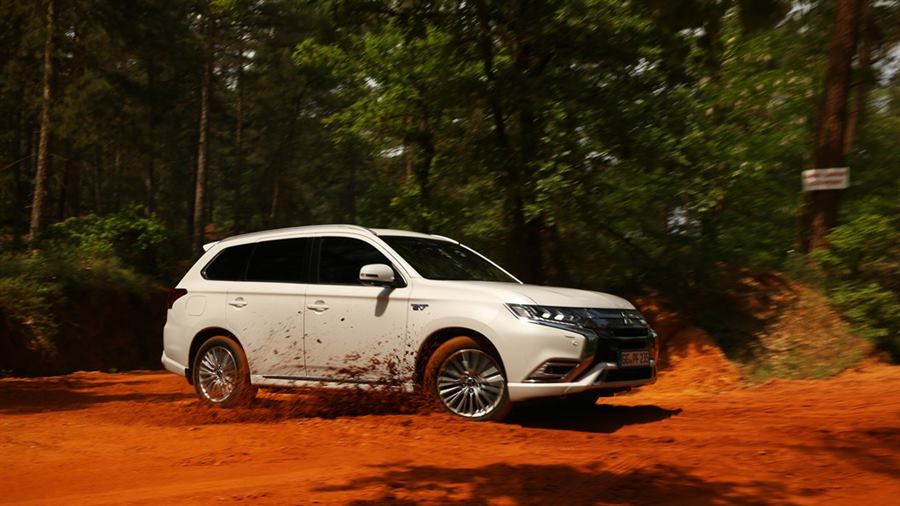
The Mitsubishi Outlander is very much on trend. It's an SUV, and also a plug-in hybrid – but it actually arrived slightly ahead of its time. Here we're driving the current model, which is almost identical to the previous car aside from the lightest of facelifts and a few technological tweaks aimed at keeping ahead of emissions regulations. Why mess with success? It's an established big seller in Britain, although the rest of the range hasn't been doing so well, prompting plans for Mitsubishi to leave Europe. For now, though, this Outlander is a current model, available through the familiar dealer network. The question is, in a market that's now brimming with hybrid SUVs, does the
How can I spot a new Mitsubishi Outlander?
With difficulty. Mitsubishi’s goals for this version clearly didn’t include major styling changes. In fact, even sat next to a 2018-spec car, it takes a few moments to spot the newer LED headlights and the lightly tweaked front grille and bumpers. The new design for the wheels is the biggest giveaway.Inside, there’s a tweaked instrument cluster, plus new air vents and a USB port for rear passengers.
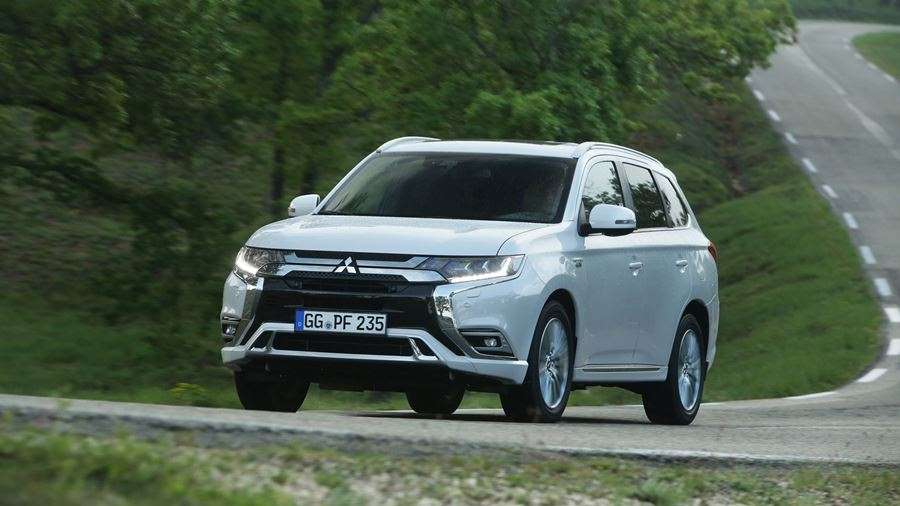
The sunroof has been relegated to the options list in an attempt to fend off the extra car tax premium buyers have to pay when pricing creeps above £40,000.
While we were impressed by the quilted leather upholstery on the seats of our test car, these are limited to the top-spec models costing north of £40k.
Still, the range starts at below £36k for the Verve, and the big-selling Dynamic version still comes in below £40k, and includes heated leather seats and a lot of safety and convenience equipment.
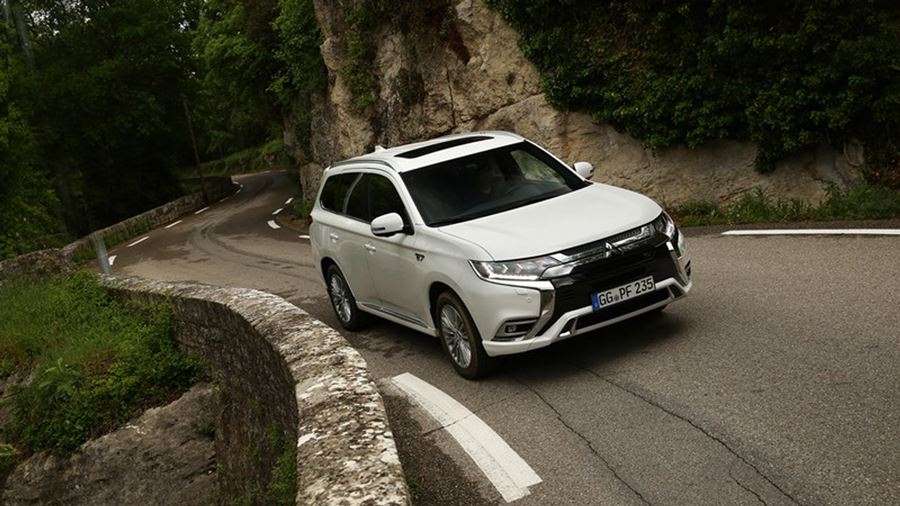
What’s the Mitsubishi Outlander hybrid like to drive?
It’s not that far removed from the previous generation, which we drove back-to-back with this latest verion, but in a couple of important respects improvements have been made. The first is in cabin refinement, because the current car is quieter, rides better and feels more solid than ever.
There’s been extra adhesive applied to the body-in-white (before painting) to strengthen the shell using an approach similar to that used in aircraft manufacture, and this has the effect of enhancing torsional rigidity, so the car flexes less through bumps and bends. The difference is slight, but worthwhile.
The tyres have changed from Toyo to Yokohama, there’s a quicker steering rack and the suspension has been recalibrated.
Doesn't sound like much of a big deal? But in fact the handling and body control have improved. The quicker steering is the most notable change, making this Outlander easier to thread through narrow roads. Road-noise intrusion levels have turned down a notch too.
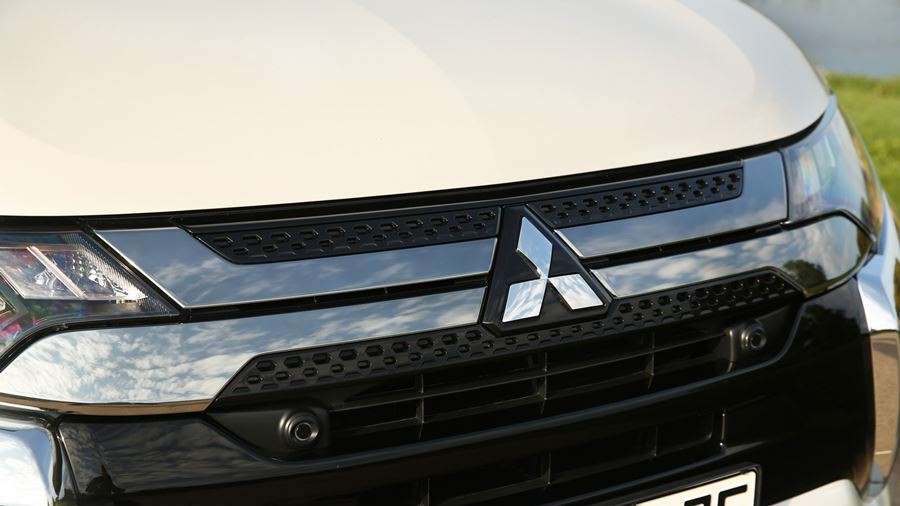
What has been sacrificed is the ride quality, which has become a bit busy on UK roads. It’s not uncomfortable by any stretch, but it feels far less settled than before. A fair trade-off for a bit more verve? Almost.
There’s a new Sport mode that offers a bit more punch, but this feels incongruous in light of the epic bodyroll that occurs when you hit a bend too quickly. An additional Snow mode prepares the capable chassis for slippery conditions.
You still get the paddles behind the steering wheel to adjust the brake regen’s effect, making one-pedal driving a possibility, and they’re still arguably backwards: the left one turns up the deceleration, whereas the opposite seems more intuitive.
Isn’t a new engine the biggest news here?
It would be, except it's rather a stretch to call this a new engine. Instead it’s an adaption of the old 2.0-litre petrol, with the latest Mivec (remember that badge from FTOs and Evos of yore?) variable valve timing added. The 2.4-litre engine can switch between Otto and Atkinson cycles, meaning it can make more power and torque when required (133bhp and 156lb ft up from 119bhp and 140lb ft in the 2.0) thanks to the extra CCs using the former cycle, but burn less fuel under lighter loads with the latter.
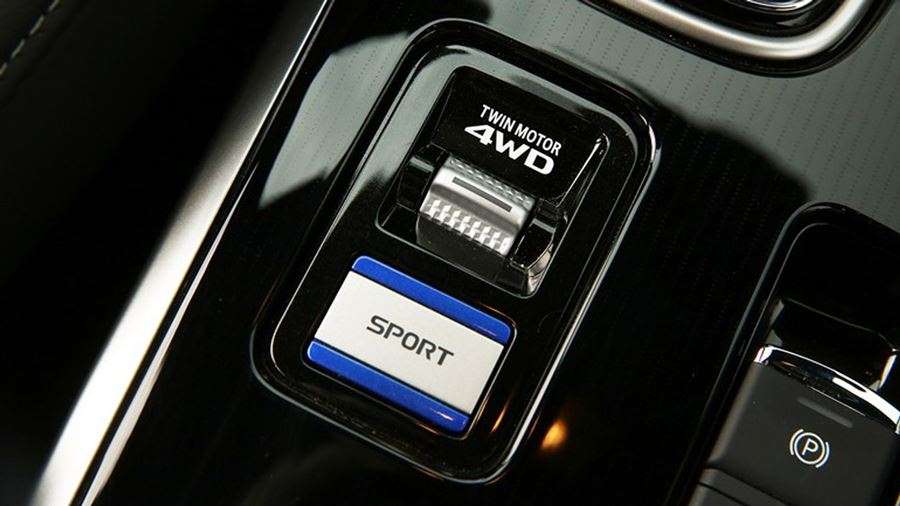
Which sounds great. And it is, except not literally. Put your foot down and you’re greeted with a monotone moan very similar to that of the old car, in that uniquely disappointing CVT fashion – lots of noise and not much acceleration. Only now, the noise is just a bit more distant than it used to be.
Funnily enough this isn’t a CVT either. It’s a fixed-gear system that drives power to the wheels, with a hydraulic clutch to modulate the electric twist provided by the twin motors. It’s built by GKN – the firm responsible for the Focus RS’s lively rear axle assembly, among many other applications.
The transmission catches up eventually and meaningful movement occurs, but it’s still no thoroughbred. The 0-62mph time has dropped 0.5 seconds to 10.5.
This engine revision plus work on the battery – which gets 10% more power output and total capacity of 13.8kWh thanks to new cells and better management – has allowed Mitsubishi to recalculate maximum electric range, fuel economy and CO2 emissions for the more realistic WLTP testing, and the results are more impressive for that reason. We’re talking 30 miles on electric power, 141mpg and 46g/km. You’re also able to drive faster on electric power – now 84 rather than 78mph.
The trade-off is it takes an extra 30 minutes to charge the car using a 16A/3.6kW charge point – this now takes four hours.
Mitsubishi Outlander hybrid: verdict
The latest Outlander PHEV doesn’t reinvent the wheel, but then it didn’t need to. It’s more relevant now than ever before as the push for plug-ins intensifies. And looking beyond the powertrain, the Outlander remains a decent if unexciting all-round package. -
Tested: 2022 Mitsubishi Outlander Goes from Punchline to Prime Time
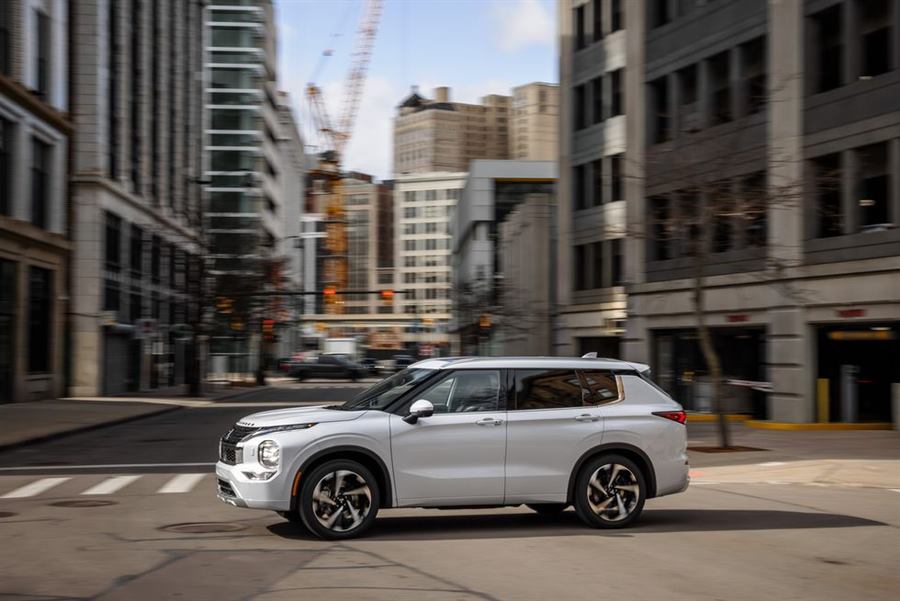
With a little help from Nissan, Mitsubishi returns to relevancy with its undeniably distinct and unexpectedly engaging fourth-generation Outlander SUV.
Mitsubishi needs a hit. It's no secret that the Japanese automaker is now a minor player in the U.S. market, its product lineup lacking the star power of an Evo, or even a Montero. It doesn't help that two of its four remaining models—the Eclipse Cross and the three-row Outlander—are compact crossovers that compete in the most cutthroat segment in America. After all, there are only so many driveways to fill every year, and in 2020 alone more than 1 million of them added either a new Chevy Equinox, Honda CR-V, or Toyota RAV4. Meanwhile, the Outlander (Mitsubishi's most popular U.S. model) found just 173,674 takers from 2016 through 2020. Facing increasing competition and decreasing market share, the company could've ordered up another facelift and resigned itself to perpetual fringe-player status. Instead, it found a tag-team partner and fought for relevancy.
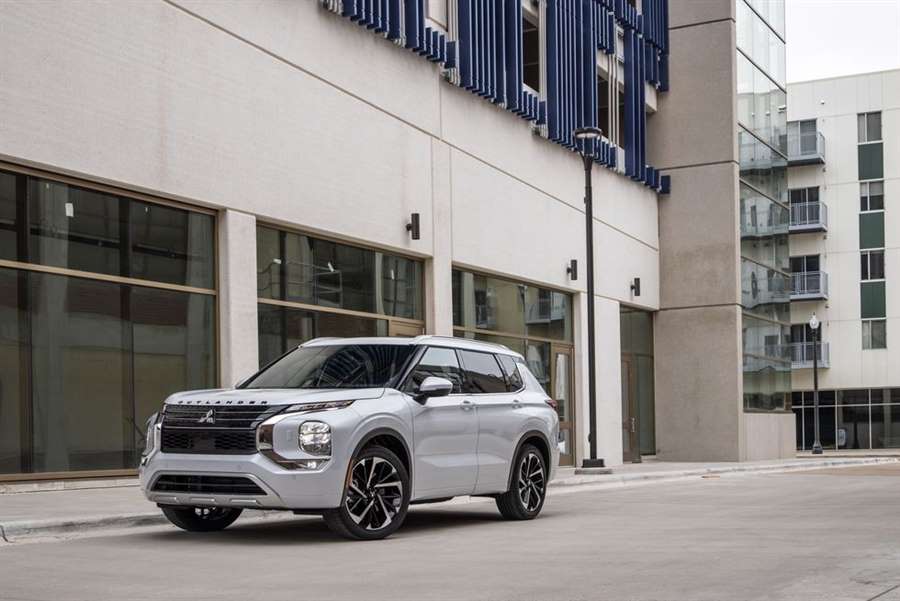
Enter the Renault-Nissan-Mitsubishi Alliance. While there’s certainly plenty of scandal and strife between Nissan and Renault, this is also Mitsubishi's redemption story. In short, the merger means Nissan developed a platform and powertrain for the all-new 2021 Rogue and then shared those fundamental pieces with Mitsubishi, which used them to create the fourth-generation 2022 Outlander. The result is a surprisingly compelling addition to the throng of compact utes jockeying for the public's attention and the press's admiration. To be clear, we're not just impressed with the new Outlander because it's better than its predecessor, which set the bar somewhere down in the Mariana Trench. We're charmed by its competent handling, handsome interior, and roster of desirable features. Its extroverted bodywork will likely have as many haters as fans, but its bold face does look better in person and some might even say it has shades of Range Rover if you look past the three-diamond emblem and squint really hard.
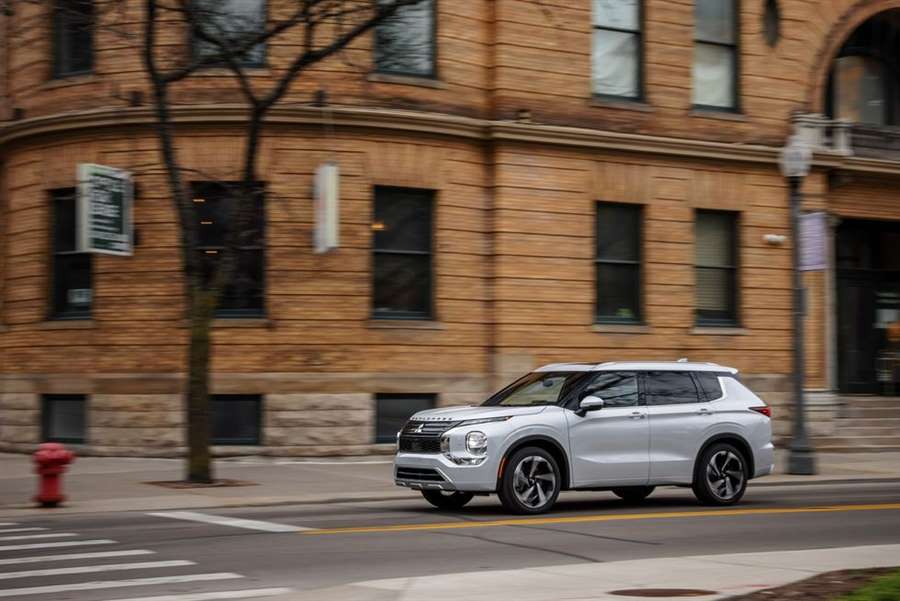
HIGHS: A cabin we like spending time in, more popular modern features, sporting intentions shine through not-so-sporting bones.
Mitsubishi calls the design inspiration I-Fu-Do-Do, which means “authentic and majestic” in Japanese. We'll just leave that right there. But we will point out that the new Outlander is one of only two compact crossovers with 20-inch wheels, which is surely to attract a size queen or two. The Volkswagen Tiguan also offers 20s and it's the only other seven-seater in this class, but the VW’s third row is limited to front-drive models. Every Outlander seats seven, but only five comfortably. Even though Mitsubishi says the rear-most seats are intended for kids only, we're confident anyone with legs won't be comfortable back there. At least passengers in the other two rows have adequate stretch-out space and enjoy more hip and legroom than before, thanks to a 3.4-inch width increase and an extra 1.4 inches between the axles. Cargo volume also grows from 33 to 34 cubic feet behind the second row and from 11 to 12 cubes behind the third row.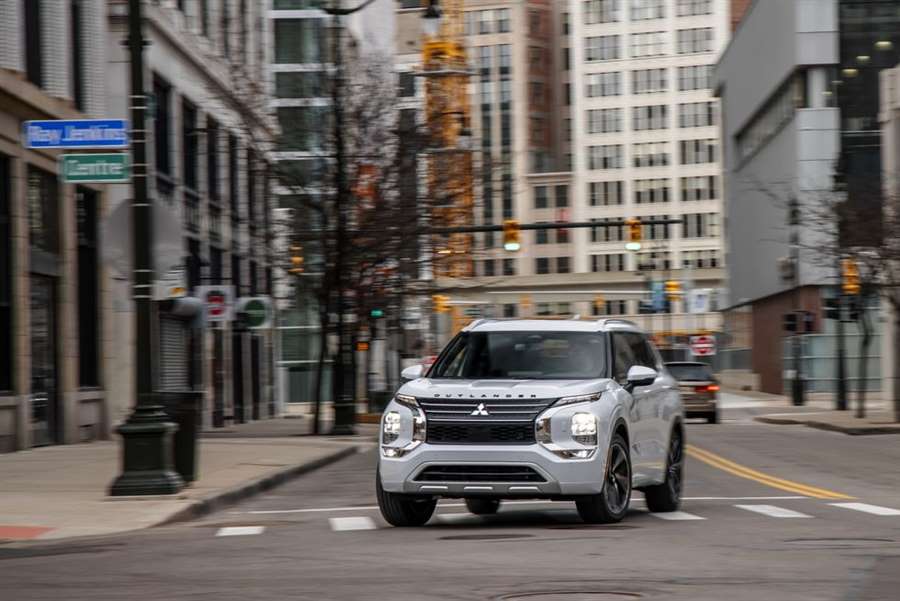
While the Outlander’s exterior is a clean break from the previous generation, its interior is an even wilder departure—not because it’s outrageously bizarre or futuristic, but because it’s genuinely nice. In the past, our most vitriolic comments were reserved for the Outlander’s prehistoric interior design and offensively cheap materials. Now, the dashboard is almost luxury-car grade in its elegant simplicity, and the hard plastics are mostly relegated to surfaces out of sight and infrequently within reach. Even base models have dual-zone climate control, knurled switchgear, and nice-feeling window switches. Stepping to a top-of-the-line SEL trim brings legitimate luxuries like leather, quilted door panels, and aluminum trim on the center console. Our Diamond White SEL example carried an as-tested price of $38,590, but that included the $2700 SEL Touring package with semi-aniline leather upholstery, a 10-speaker Bose stereo, a head-up display, and a panoramic sunroof. While we appreciated the crisp resolution and configurability of the 12.3-inch digital gauge cluster, only die-hard fans of The Price Is Right will appreciate the Big Wheel-inspired speedometer and tachometer. The 9.0-inch touchscreen infotainment system—up from the standard 8.0-incher—works flawlessly with wireless Apple CarPlay, though Android Auto users must still be plugged in.
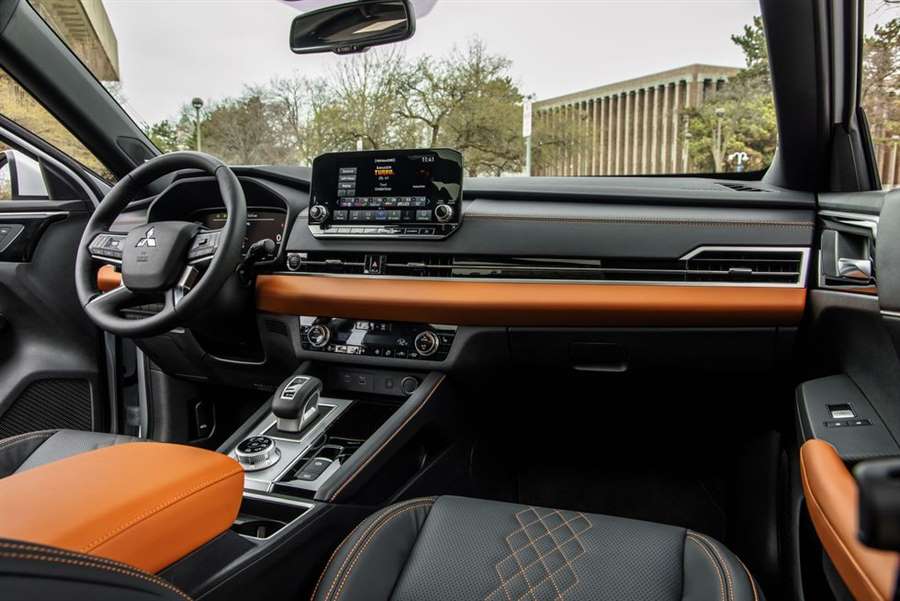
The Outlander SEL we tested was also fitted with the $1800 all-wheel-drive system and the aforementioned 20-inch wheels. They're standard on most trims and even optional on the base one and are fitted with wide-for-this-class (255 section width) Bridgestone Ecopia H/L 422 Plus all-season tires. They provide a notable 0.85 g of cornering grip and contributed to the Outlander's newfound agility. Sure, their narrower sidewalls and the SUV's lack of isolation combined to send hollow thuds up through the structure. The hood flutter at 70 mph is enough to have a passenger question whether the bonnet was actually latched. We’re not surprised that the steering offers little in terms of feedback, but the car doesn’t fall on its face if you have to hustle it around a cloverleaf to merge. It needed 172 feet to stop from 70 mph, which is respectable for the class and 8 feet shorter than a 2016 Outlander we tested. We’d feel even better about the brakes if the pedal weren’t so squishy.
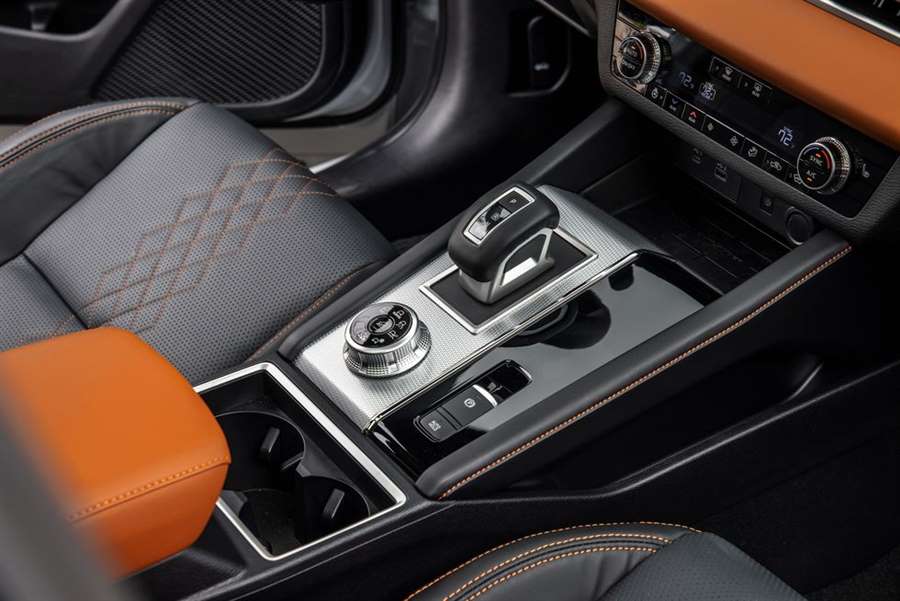
But the biggest demerit is the Outlander’s 181-hp 2.5-liter inline-four and continuously variable automatic transmission (CVT). It's the only powertrain until the plug-in-hybrid variant arrives. Thankfully, the new engine isn't quite the boat anchor that the 166-hp 2.4-liter four-pot it replaces was, but the 224-hp V-6 is no longer an option. The old four-cylinder powertrain carried the Outlander to 60 mph in 9.3 seconds. The Nissan-supplied version takes 8.2 ticks and is a half-second quicker between 50 and 70 mph (6.0 seconds flat). Both times are identical to the Rogue we tested, despite the Mitsubishi's 226-pound disadvantage. But even though the Outlander feels responsive at city speeds and can keep pace on the highway, the transmission's syrupy behavior and overall lack of urgency when merging dulls our enthusiasm. Especially when the top trim's sticker price mirrors that of a turbocharged Mazda CX-5.
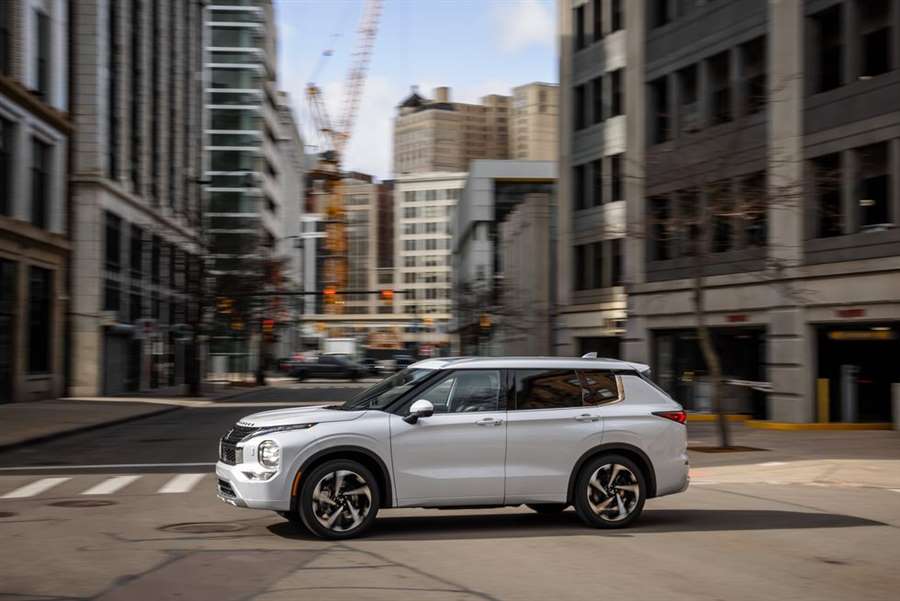
Mitsubishi’s resolutely average powertrain is probably the right call for this market. Remember the 2010 Outlander GT? It featured a V-6, an electronically controlled limited-slip front differential, a lockable center diff, magnesium column-mounted paddle shifters, an aluminum roof, and a 7.5-second 60 time. Nobody bought that one.
So, four-banger and CVT it is. Though the Outlander's CVT mimics traditional gearchanges and effectively mitigates the dreaded engine drone, it doesn't really pay off at the pump. The EPA estimates all-wheel-drive versions will earn 24 mpg city and 30 highway. That's not particularly impressive, and an equivalent and lighter Rogue is rated at 25 mpg city and 32 highway. We tested both on our 75-mph highway fuel-economy test and observed 32 mpg with the Nissan and a much lower 26 mpg with the Mitsubishi.
Even with our enthusiast-slanted gripes and its underwhelming powertrain, the 2022 Outlander finally has some style and substance to compete against today's top compact crossovers. “Spend money where people can see it” is probably a good strategy when your audience cares more about a quality interior than having a tarmac setting on the all-wheel-drive system. And compared with the Rogue, the Outlander also offers a higher towing capacity (2000 pounds versus 1350) and a longer powertrain warranty (10 years or 100,000 miles versus five or 60,000). Credit Nissan with the assist, but Mitsubishi made its own decisions and took its own chances to transform the Outlander from punchline to prime time.
-
This is the new Mitsubishi Outlander - and this time it looks really new
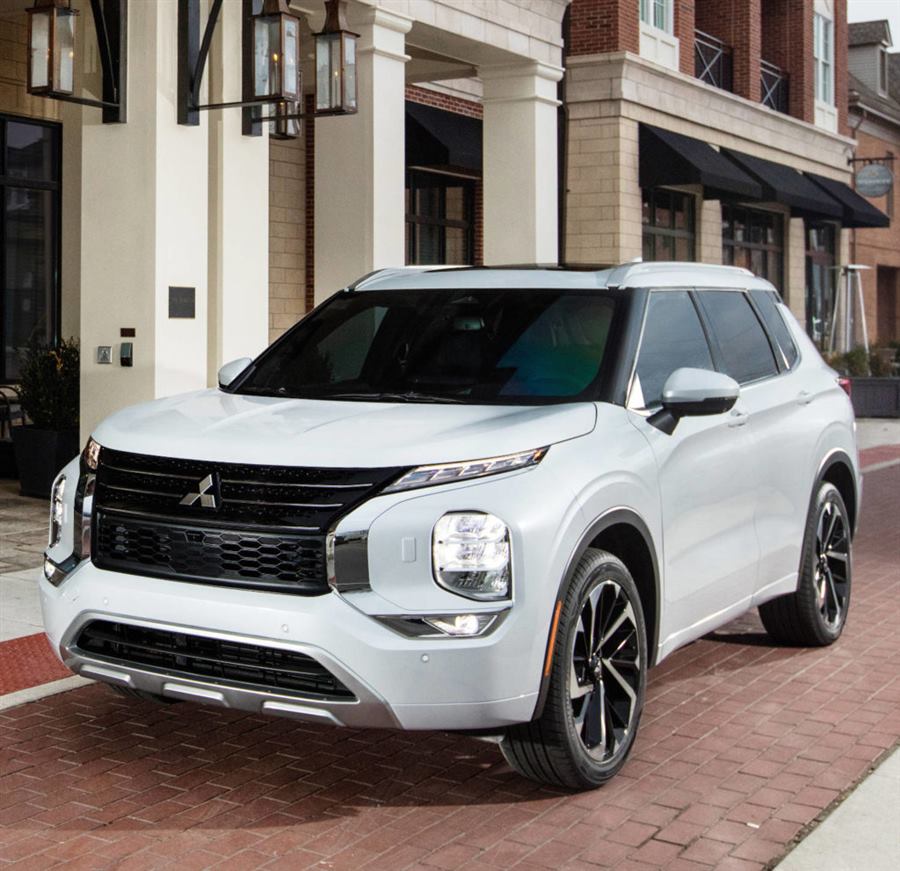
And will he come to Europe? Hopefully, because the new Mitsubishi Outlander looks really good.
The last generation of Outlanders did not look new even at the time of the premiere, while later refreshments did not contribute much. It is possible that this was a deliberate attempt by the company to attract customers who do not run after the news and who rely on proven solutions that are easy to use. Because we can find a lot of positive information about the release version of Outlander today.
Last night, Mitsubishi unveiled the next generation of its flagship model on the Amazon Live platform. Great idea, as more and more people are buying cars online.
The new Outlander is closely linked to Nissan for the first time. It was made on the platform that Nissan developed for the Rogue or X-Trail model, although the designers made sure that the acquisition was not obvious. In this madness, the new Outlander can bravely fight for the title of the most extravagant SUV with the new Hyundai Tucson.
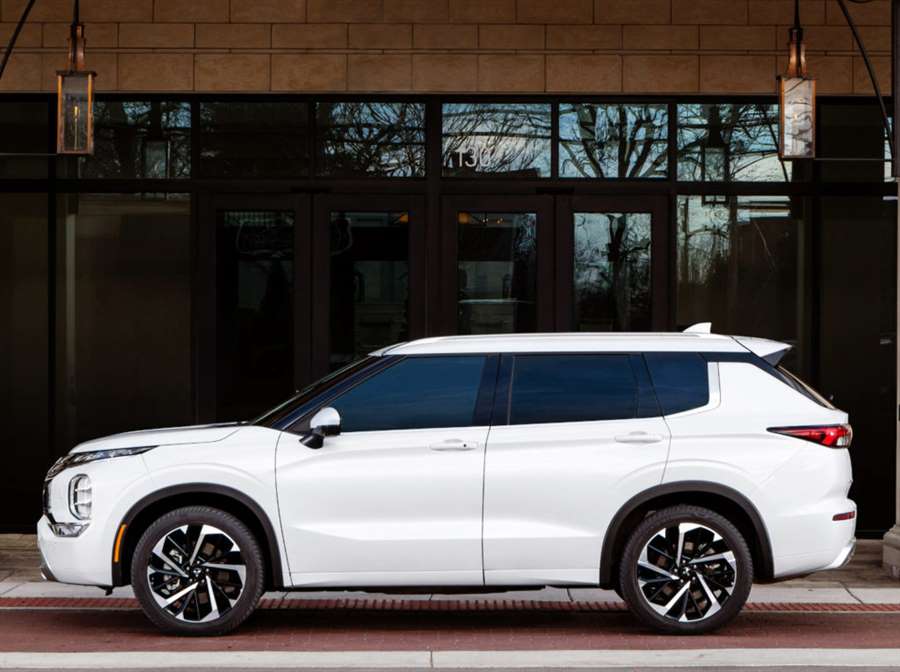
Compared to its predecessor, the Outlander has grown even more. It is 471 cm long, 186 cm wide and 175 cm high. So it’s only 15mm longer, but 51mm wider and 38mm bigger. The wheelbase has also been increased - from 267 to 270.6 cm. All passengers, especially those in the second and third rows, will get an extra inch - as the Outlander will still be available for purchase in the seven-seater variant.
Fortunately, the interior has undergone tremendous changes
Luckily, it depends on who judged the previous generation. Comparing them to the competition, the interior of the previous generation Outlander looked old, which cannot be said for the new generation. It has a screen behind the wheel, a head-up display, a tablet attached to the top of the center console.It also has classic air conditioning and ventilation controls, while watching the temperature display is similar to screens from the end of the last century which is even very classic. But if something works great and is practical, why would you have to change it.
The interior of the Outlander is shown in two configurations and looks good in both. And again - you can find similarities with Nissan. The only thing that’s a little hard to digest is the silver plate around the gearbox and the engine start button — it looks like it was inserted there at the last minute by a random piece found in some corner of the design studio.
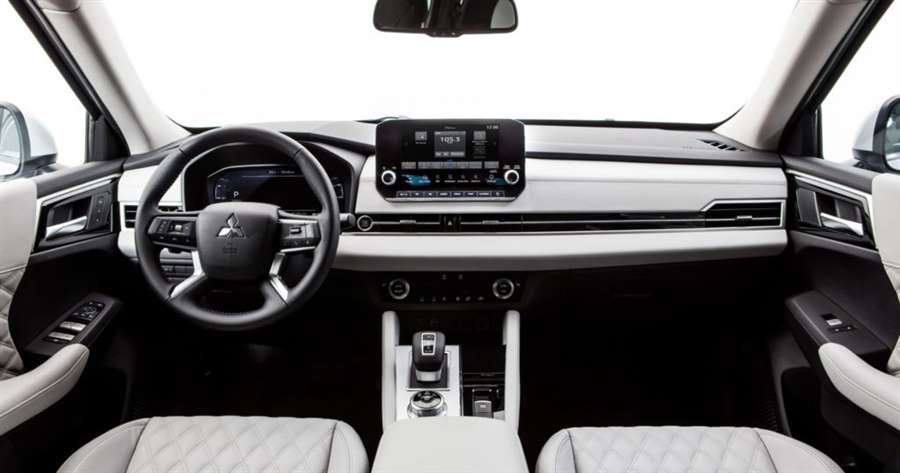
There is nothing to complain about, be happy that it has a 4 × 4 drive
Mitsubishi points out that this is a Super All-Wheel Control 4WD drive, the one it has been bragging about since competing in WRC rallies. It should allow for efficient movement no matter what is under the wheels of the car.
And the movement itself will be provided by a 2.5-liter petrol engine with 181 hp and 245 Nm of torque, driven by a continuously variable 8-speed gearbox. The mentioned numbers do not look impressive, and how they turn into performance - the manufacturer has not revealed that yet. But the chances of seeing a car in this configuration in Europe are pretty negligible.
New Mitsubishi Outlander in Europe?
It will or will not come to the European market - it was not said. In theory, we are still in the period of freezing the European range that the company introduced in the first phase of the pandemic last year.We are waiting for the official announcement of the European branch of the brand.










